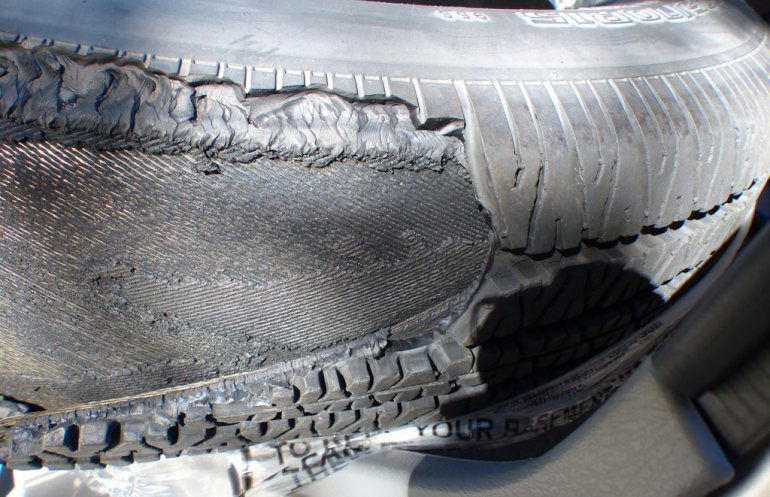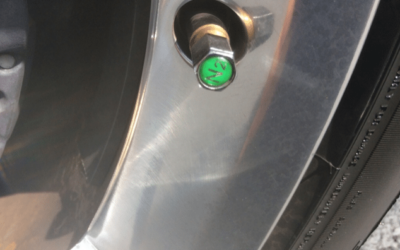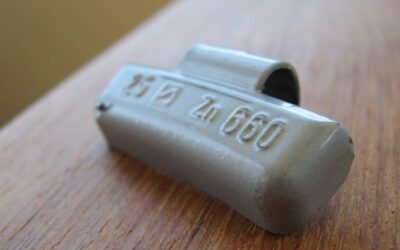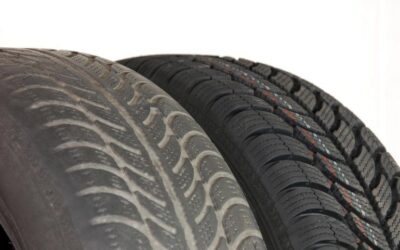Old tires kill people. They deteriorate over time even if not in use. They may appear to be sound on the outside, but inside the rubber steadily deteriorates, weakens their structures, and raises the risk of a blowout at any time. In one case, the tires of a vintage vehicle had only 4,000 miles on them and looked fine, but they were 11 years old; one of them blew out, the car crashed, and a passenger suffered permanent injury. Tire expiration date is printed on the side wall of each tire, but do you recognize it?
No Expiration Dates
In response to calls for expiration dates, the Rubber Manufacturers Association says many variables affect aging and, for this reason, says the association, the National Highway Transportation Safety Administration (NHTSA) should not act without solid scientific evidence. Manufacturers say expiration dates would complicate distribution because new tires often spend years on shelves before dealers sell them. They also say they believe consumers would ignore expiration warnings as mere industry stratagems for more sales.
NHTSA has issued performance standards but deferred development of any aging test because experts have not agreed on a method. The agency hopes to have a new plan on safety testing after additional research.
Date Codes
The last group of digits in the United States Department of Transportation (DOT) manufacture code on the sidewall indicates the date manufactured. The current DOT code indicates who manufactured the tire, where, and when. The date part of the code has four digits, the first two the week of the year, the third and fourth the year. As an example, “1806” indicates the 18th week of the year 2006.
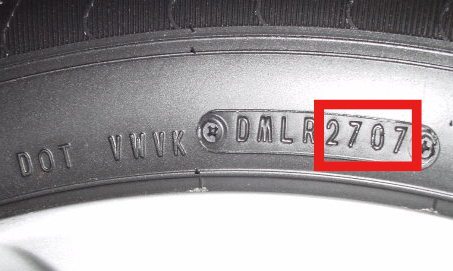
four digit number represents date of manufacture: 27th week of the year 2007
The date manufactured is essential information as deterioration continues under all conditions. Manufacturers recommend replacement after six years, spares too.
Checking for Wear
Deterioration is most rapid on vehicles driven daily at speed over long distances. For such vehicles, prudence dictates regular checks for excessive wear. If worn to the extent that cords show through the rubber, immediate replacement is necessary as with bulges, cracks, or tread separating from the casing.
A penny placed with Lincoln’s head upside down in a groove between the treads can measure wear. As long as the tread covers some of Lincoln’s had, some wear remains. But if the top of Lincoln’s head is flush with or below the tread, the time for replacement has come.
Used Tires as Replacements
Are used tires safe replacements? They can be if they meet certain criteria. Dealers should following safety guidelines to prevent failure hazards:
- Store stock in cool location shielded from sunlight.
- Use a first-in, first-out rotation policy.
- Check the age of every tire serviced and sold.
- Check existing inventory and new shipments. Return all past their service life to the manufacturers.
Train all technicians as necessary.
- Educate customers on safety precautions.
- Recommend to customers replacement of aged tires.
Six-Year Expiration Dates
The 1973 average tread life, 24,000 miles, has quadrupled, and some manufacturers now promise 100,000. As tread life becomes a lesser factor in serviceability, oxidation becomes more serious, particularly in Florida, Georgia, Louisiana, and Texas, routinely the hottest states.
The evidence clearly calls for an expiration date. As tires age they become increasingly likely to fail because rubber degrades with age. Sunlight, heat, ice, and general wear and tear accelerate breakdown. Once the breakdown begins, there is likely to be a tread separation, sometimes at high speed, when the failure can cause major injury or death.
The expiration date should be six years from the date manufactured. Dangerous aging from oxidation causes the flexible components to harden and become brittle. Eventually, like an old rubber band, the tire simply falls apart under normal stress. Because this chemical process is an immutable fact of life, it makes no difference whether the tire is in use, stored as a spare, or occupying store shelf space waiting for a buyer.

